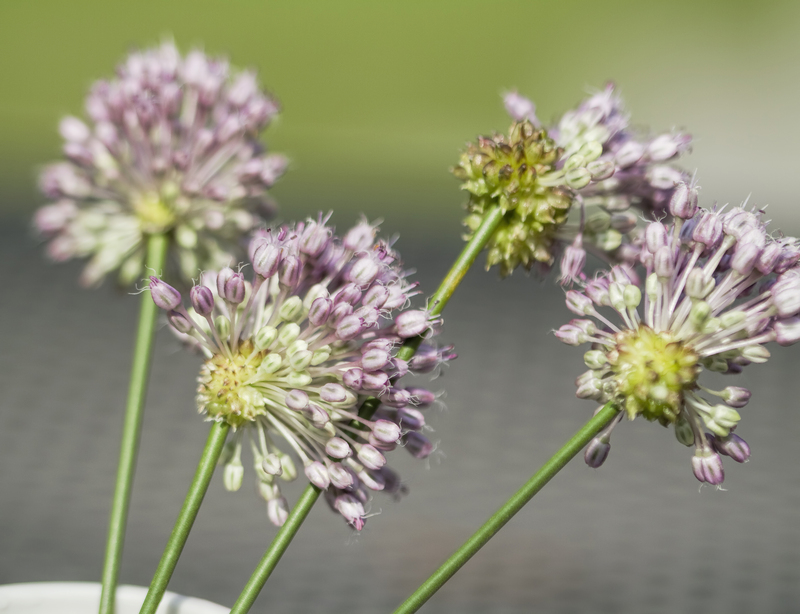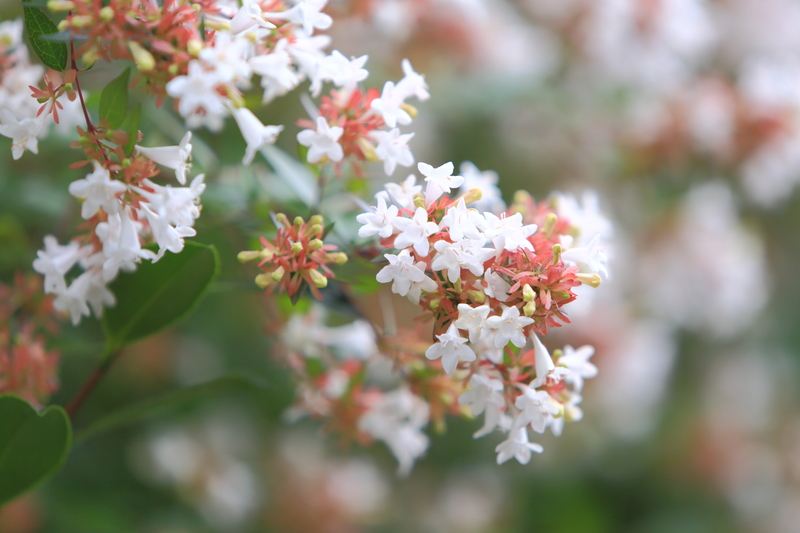Designing Pet-Safe Green Spaces
Posted on 14/06/2025
Designing Pet-Safe Green Spaces: A Comprehensive Guide
Creating a garden or backyard that is both lush and secure for your beloved pets is essential for their well-being. Designing pet-safe green spaces is more than just choosing the right plants--it's about crafting an environment where your animals can roam, play, and explore without facing any dangers. In this article, we'll discuss how to transform your outdoor space into a pet-friendly garden that is both beautiful and secure, covering everything from landscape design to selecting nontoxic plant varieties.

Why Pet-Safe Green Spaces Matter
Modern pets spend much of their time indoors, but access to the outdoors dramatically boosts their physical health and emotional happiness. A well-designed green area lets them exercise, relieve stress, and satisfy their curiosity in safe surroundings. However, common gardening practices and plants can often pose risks to pets, such as toxic plant ingestion or exposure to harmful chemicals. That's why creating pet-friendly landscapes is vital for any pet owner who values both ecological aesthetics and the safety of their furry friends.
Planning Your Pet-Safe Green Space
Designing pet-safe gardens requires thoughtful consideration. Before breaking ground, analyze your pets' behavior, breed-specific needs, and unique preferences. Here's how to begin:
1. Assess Your Outdoor Area
- Size: How much space do your pets need to run and enjoy themselves?
- Sunlight: Are there areas with shade for cooling down or full sun for lounging?
- Security: Are your fences sturdy, high enough, and gap-free?
- Current Hazards: Are there existing plants or chemicals that could harm pets?
2. Pet Behavior & Needs Analysis
- Digging habits: Some dogs love to dig. Plan for it, or design deterrents.
- Urination zones: Pets often pick favorite spots; consider designated toilet areas.
- Exercise requirements: Breeds with high energy levels need more open space.
- Allergies & sensitivities: Take note if your pet has past reactions to specific plants or substances.
3. Create a Zoning Strategy
Zoning means dividing your garden into different zones--active play, relaxation, and bathroom areas. This not only helps protect your landscaping but also trains your pet to behave predictably in the yard.
- Play Zones: Use robust grasses or artificial turf that can withstand wear and tear.
- Rest Areas: Provide shaded spaces with soft groundcover where pets can relax.
- Toilet Zones: Easy-to-clean gravel or mulch areas, clearly marked, help with routine and cleanliness.
Plant Selection: Choosing Non-Toxic Varieties
Plants form the heart of any green space, but not all are safe for pets. Many common garden staples--such as lilies, azaleas, and sago palms--can be toxic to cats and dogs. *Research is key when creating a pet-safe landscape.*
Safe Plant Choices for Pet-Friendly Gardens
- Marigolds (Tagetes spp.)
- Sunflowers (Helianthus spp.)
- Spider Plants (Chlorophytum comosum)
- Basil (Ocimum basilicum)
- Camellia (Camellia japonica)
- Snapdragons (Antirrhinum majus)
When designing dog-friendly gardens, avoid plants like:
- Sago Palm
- Oleander
- Azalea
- Tulips
- Foxglove
Always check with your local nursery or consult online databases regarding pet toxicity and consult your veterinarian if in doubt.
Edible Landscaping
For ultimate pet-safe green design, consider edible landscaping with herbs like parsley, rosemary, dill, or safe fruits like blueberries and strawberries. These double as treats for your pets and are generally safe if nibbled occasionally.
Using Hardscapes for Safety and Convenience
Hardscaping involves using elements like walkways, patios, edging, and rocks to structure your yard. When building a pet-safe landscape design, hardscapes offer both beauty and function.
Pet-Safe Pathways and Surfaces
- Flagstone or smooth pavers: Easy on paws and claws
- Pea gravel: Soft but not easily swallowed
- Mulch: Use cedar or pine, never cocoa mulch (toxic to dogs)
Tip: Avoid sharp gravel, thorny plants, or rough surfaces that could cut or injure your pet.
Fencing and Boundaries
A secure fence is essential in any pet-proof green space. For dogs, ensure the fence is tall enough and buried at the base to prevent escapes. For cats, angled fence-toppers or catios (enclosed patios) can keep them safe while enjoying the outdoors.
- Visibility: Use materials that let pets see through, reducing fence anxiety.
- Stability: Regularly check for loose boards or areas where pets might dig under or squeeze through.
Natural Pest Control for Pet-Friendly Gardens
Conventional pesticides and herbicides are among the biggest dangers in modern gardens. When designing a pet-safe green space, opt for organic or natural alternatives:
- Neem Oil: Effective against a range of pests, safe when used as directed.
- Companion Planting: Planting garlic, basil, or marigolds can repel pests naturally.
- Beneficial Insects: Attract ladybugs, lacewings, and predatory beetles to control pests.
- Manual Removal: For small spaces, physically removing pests can be effective and toxin-free.
Always read product labels, and keep pets away from treated areas until completely dry or safe per manufacturer instructions.
Pet-Proofing Your Green Space: Tips & Strategies
1. Water Features
- Shallow Ponds or Fountains: These can provide water for drinking and play, but ensure pets can't fall in and get stuck.
- Chemical-Free: Avoid chlorine or algaecides that could harm animals if ingested.
2. Shelter & Shade
- Install pergolas, plant shade trees, or create covered nooks for heat relief during the summer months.
3. Waste Disposal
- Provide pet waste stations with bags and trash cans away from edible or garden areas.
- Avoid letting pet waste accumulate, as it can harm lawns and promote disease.
4. Toys and Enrichment
- Sturdy toys: Rotate safe, weatherproof toys to keep your pets engaged.
- Dig pits: For dig-prone dogs, create a designated dig pit filled with sand.
Designing for Multiple Species
If you share your home with dogs, cats, rabbits, or even chickens, you'll need a balanced solution for all residents. Here are guidelines for a multi-pet outdoor haven:
- Pathways: Wide enough for larger animals, with visual breaks for shyer pets.
- Height Variations: Cats love high perches; rabbits appreciate tunnels and low shrubs.
- Enclosed Areas: Separate zones or rotational access when pets don't get along.
Common Hazards in Traditional Gardens
While planning your pet-safe garden, watch out for these overlooked dangers:
- Slug/Snail Bait: Highly toxic when ingested.
- Fertilizers: Bone meal, blood meal, and other organic fertilizers can be irresistible--but deadly--to dogs and cats.
- Compost Piles: Compost that contains food waste can attract pets; certain bacteria in decomposing material may be harmful if ingested.
- Sharp Tools: Always store rakes, shears, and other sharp objects safely out of reach.
Sustainable Practices in Pet-Safe Landscaping
Embracing sustainability not only helps the environment but also enhances your pet's safety. Consider eco-friendly solutions:
- Rainwater Harvesting: Use collected water for pet hydration and garden irrigation.
- Native Plants: Native species require less care, use fewer chemicals, and are less likely to be toxic.
- Composting: Use yard waste only, and keep heaps contained and out of bounds for pets.
- Permeable Paving: Reduces runoff and puddles, creating a drier, cleaner play environment.
Organic Lawn Care Methods
- Corn Gluten Meal: A natural pre-emergent weed killer.
- Manual Weed Pulling: Safe, sustainable, and engages you with your yard.
- Regular Aeration: Keeps your lawn healthier and more resilient to digging or urine patches.
Maintenance: Keeping Your Pet-Safe Green Space Beautiful and Secure
Ongoing care is crucial. Regular gardening tasks are a great way to bond with your pets and ensure continued safety. Here's what to prioritize:
- Inspect fences and gates frequently for signs of escape attempts or damage.
- Monitor plant growth: Prune toxic plants that may have self-seeded or blown in from neighbors' yards.
- Clean water features and replace water routinely to discourage algae and mosquito breeding.
- Check mulch beds and replace with pet-safe material as needed.
- Watch for digging or overused areas and repair with fresh turf, ground cover, or pea gravel.
Benefits of a Pet-Safe Green Space
The benefits of pet-friendly landscaping go well beyond safety. Here's what you and your pets stand to gain:
- Physical exercise: Encourages daily play and fitness.
- Mental stimulation: Changing aromas, textures, and sounds make outdoors interesting for pets.
- Bonding: Shared time outdoors strengthens the connection between pets and owners.
- Reduced stress: Access to nature calms anxiety and reduces destructive behaviors.
- Aesthetics: Your yard becomes a withdrawal from daily stress for the whole family--pets included!

Inspiration: Real-Life Pet-Friendly Gardens
Many homeowners have transformed their landscapes with pet safety in mind. From dedicated dog runs to "catio" enclosures, there's inspiration everywhere for your project.
- Urban oasis: Small courtyards made safe with vertical gardens, water bowls, and synthetic turf.
- Suburban retreat: Large yards sectioned into zones for training, play, and relaxation.
- Balcony gardens: Secure screens and raised planters make high-rise living safe for indoor cats.
Every pet-safe landscape begins with a vision--let yours reflect both your design sense and compassion for your four-legged companions!
Conclusion: Start Designing Your Pet-Safe Green Space Today
A well-planned, secure green area enriches both your life and that of your pets, providing a sanctuary for recreation, exploration, and relaxation. Designing a pet-safe outdoor space means making intentional choices about landscaping, plants, and maintenance--all with safety, sustainability, and joy in mind.
Take the first step by assessing your yard, researching safe plants, and mapping out areas for your pets' unique personalities. With the right strategies and a little creativity, your garden can be both a lush, vibrant paradise and a haven for every pet who shares your world.
Looking for more ideas on pet-safe garden designs or tips on sustainable landscaping? Keep exploring our website for updated guides and step-by-step inspiration!

